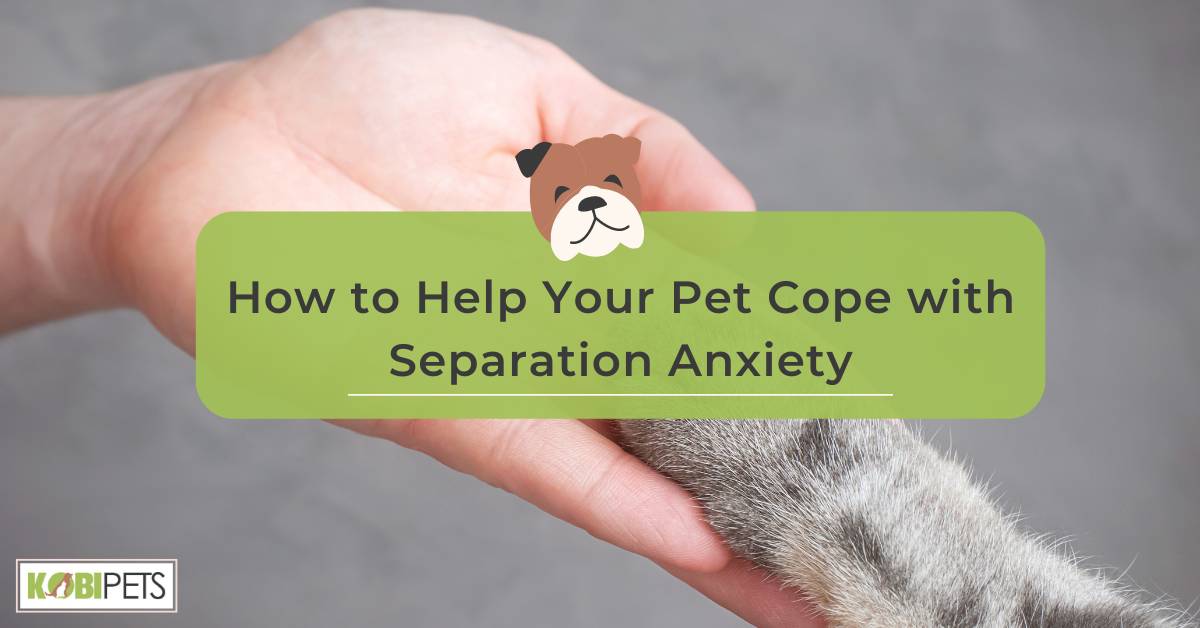
Separation anxiety can be a difficult problem for both pet owners and their furry friends. It’s heartbreaking to see your beloved pet distressed when you have to leave them alone, but thankfully there are ways that you can help your pet cope with this issue.
To help your pet cope, gradually introduce them to alone time, establish a routine, provide engaging toys and treats, and avoid giving attention when leaving or returning. Consult with a veterinarian or a professional animal behaviorist for additional support.
In this blog post, we will discuss some steps you can take to ensure that your pet is comfortable when separated from you. Read on to learn more about helping your pet cope with separation anxiety.
Understanding Separation Anxiety in Pets
Separation anxiety in pets is a common, yet serious, problem that affects many animals. It occurs when a pet experiences fear or distress due to being left alone or separated from its owner. Pets with separation anxiety may exhibit behaviors such as excessive barking, urination/defecation, destructive chewing, and/or pacing. In more severe cases, pets may even try to escape the home to find their owner.
Pet owners need to recognize the signs of separation anxiety and take appropriate measures to help minimize stress and improve overall well-being. This can include providing enough physical activity, and mental stimulation, and forming a predictable daily routine with plenty of attention and affection.
Additionally, gradual desensitization may be beneficial for pets with severe separation anxiety. With patience and consistency, pet owners can help their animal companion to feel more secure and comfortable when left alone.
It is important to understand that the effects of separation anxiety on pets can be both physically and emotionally taxing on them; therefore, owners must take action to ensure their pet’s well-being. With the appropriate care and guidance, it is possible to reduce anxiety in pets and increase comfort levels when they are left alone.
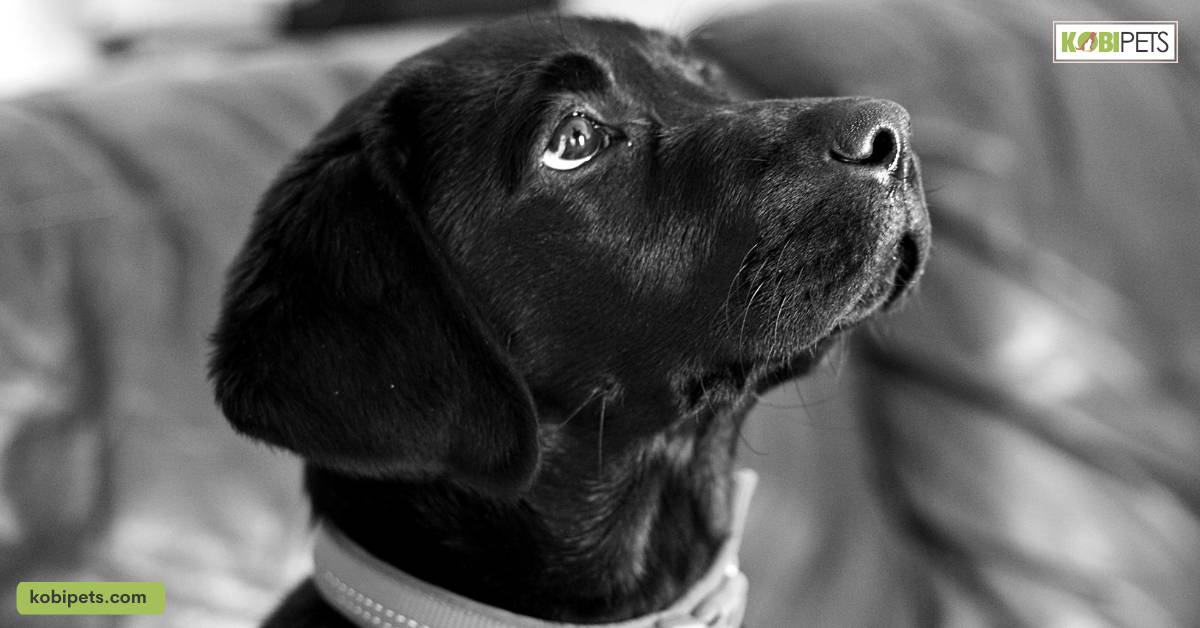
Signs of Separation Anxiety in Pets
Separation anxiety is a common problem in pets, particularly in dogs, and it can manifest in a variety of ways. If your pet is experiencing separation anxiety, it is important to recognize the signs and take appropriate action to help them cope. Here are some common signs of separation anxiety in pets:
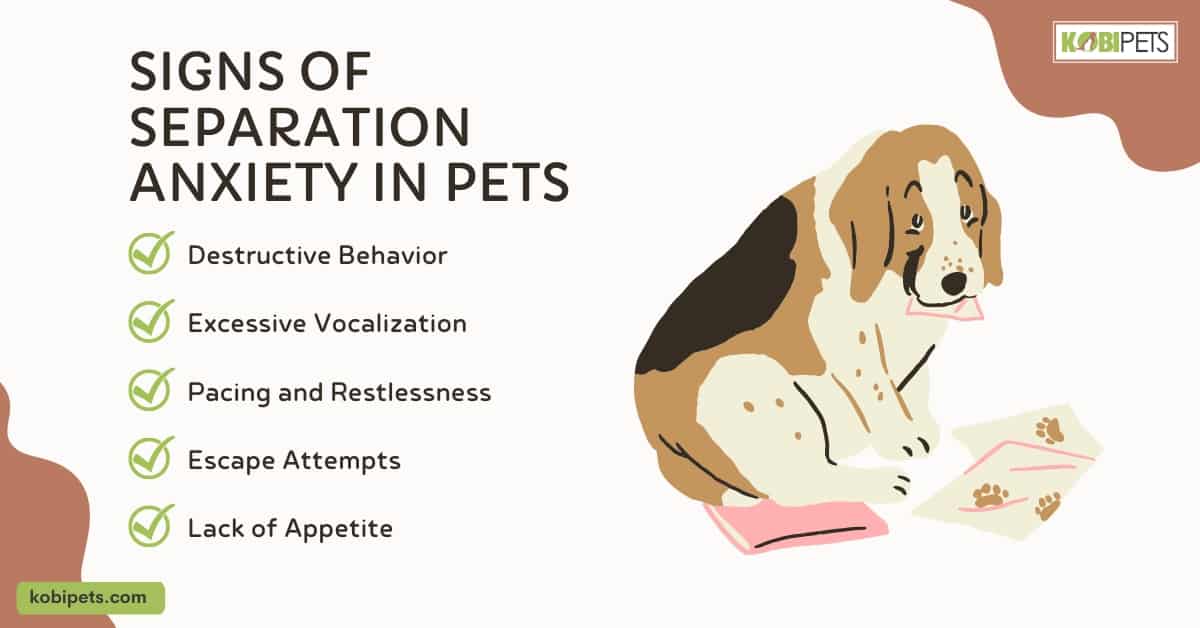
Signs of Separation Anxiety in Pets
- Destructive Behavior: Pets with separation anxiety may engage in destructive behavior such as chewing, digging, scratching, or urinating inside the house. This behavior often occurs soon after the owner leaves and is a way for the pet to cope with the stress of being alone.
- Excessive Vocalization: Pets with separation anxiety may bark, whine, or howl excessively when left alone. This behavior can be disruptive to neighbors and can indicate the pet is experiencing distress.
- Pacing and Restlessness: Pets with separation anxiety may become restless, pacing back and forth or circling the house. This behavior is often accompanied by panting, trembling, or sweating and is a clear indication of the pet’s discomfort.
- Escape Attempts: Pets with separation anxiety may try to escape from the house or yard when left alone. They may attempt to dig under or jump over fences, scratch at doors or windows, or chew through walls.
- Lack of Appetite: Pets with separation anxiety may experience a decrease in appetite or refuse to eat altogether when their owner is away.
It is important to note that some of these behaviors can also be caused by other factors, such as boredom or lack of exercise. Therefore, it is crucial to rule out any medical or behavioral issues before attributing them to separation anxiety. If you suspect that your pet is experiencing separation anxiety, it is essential to seek professional advice from a veterinarian or animal behaviorist to help diagnose and treat the condition.
Creating a Safe and Comfortable Environment
Creating a safe and comfortable environment for pets is essential to ensuring their well-being. This includes providing adequate shelter, nutrition, exercise, mental stimulation, social interaction, and medical care. Ensuring pet owners also create an environment that is free from hazards such as sharp objects or dangerous chemicals is key to preventing accidents.
In addition to providing a safe environment, pets must have comfortable living conditions.
- Providing items such as beds, toys, and treats to keep them entertained and occupied. Pets should also have access to clean water, fresh food, and a place to call home.
- Ensuring each pet has its own space to relax, play or hide away from other animals is paramount in creating a comfortable atmosphere.
- Providing regular exercise and social interaction with other animals is important for physical and mental stimulation to keep pets active and engaged.
- Creating a sense of security and stability is also important to factor when providing a safe and comfortable environment for pets.
- Through consistency in feeding times, exercise routines, and interactions with other animals, pets can become more secure in their surroundings.
- By providing regular rewards, positive reinforcement, and praise, pet owners can foster an atmosphere of trust and confidence between themselves and the animals they care for.
Establishing a set of rules that the pet is expected to follow and reinforcing these expectations can also create a sense of consistency within their environment. In this way, pets can experience a safe and comfortable atmosphere in which they can thrive.
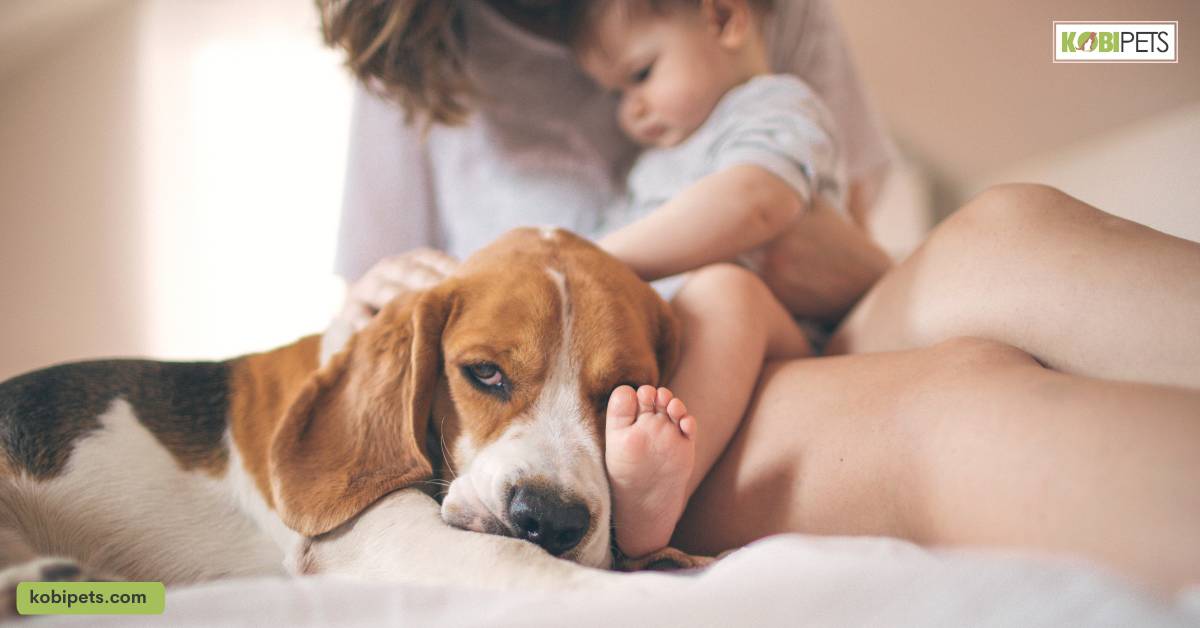
How to Gradually Train Your Pet to Cope With Being Alone
Training your pet to cope with being alone takes time, patience, and consistency. Here are some steps you can take to gradually train your pet to be more comfortable when left alone:
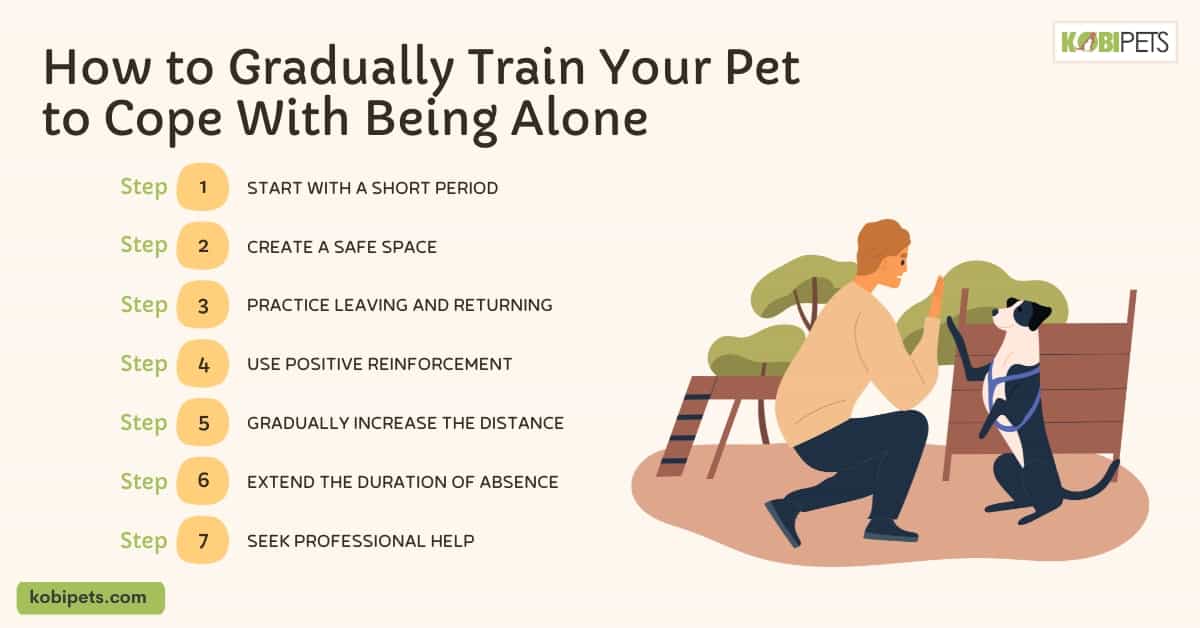
How to Gradually Train Your Pet to Cope With Being Alone
Step 1: Start with a short period
Start by leaving your pet alone for very short periods, such as five to ten minutes. Gradually increase this time over several weeks, until your pet is comfortable being alone for longer periods.
Step 2: Create a safe space
Choose an area in your home where your pet feels safe and comfortable. This could be a cozy corner with a bed, some toys, and a blanket. Leave your pet in this space when you are away.
Step 3: Practice leaving and returning
Before leaving your home, say a simple and calm goodbye to your pet. When you return, greet your pet with affection but try to keep your energy level low. This can help your pet learn that leaving and returning home is a routine part of the day.
Step 4: Use positive reinforcement
Reward your pet with praise, treats, or toys when they display calm behavior during your absences. You can also use a “comfort” toy or a puzzle toy to distract them.
Step 5: Gradually increase the distance
Once your pet feels comfortable being alone in one area, start to expand its range by having them be alone in another room, gradually increasing the distance from you.
Step 6: Extend the duration of absence
Once the distance has been increased slowly, start practicing leaving your pet alone for longer periods.
Step 7: Seek professional help
Consult with your vet or an animal behaviorist if your pet struggles to make progress or their anxiety worsens.
Consistency is key, and by regularly practicing these steps, your pet can eventually learn how to cope with being alone.
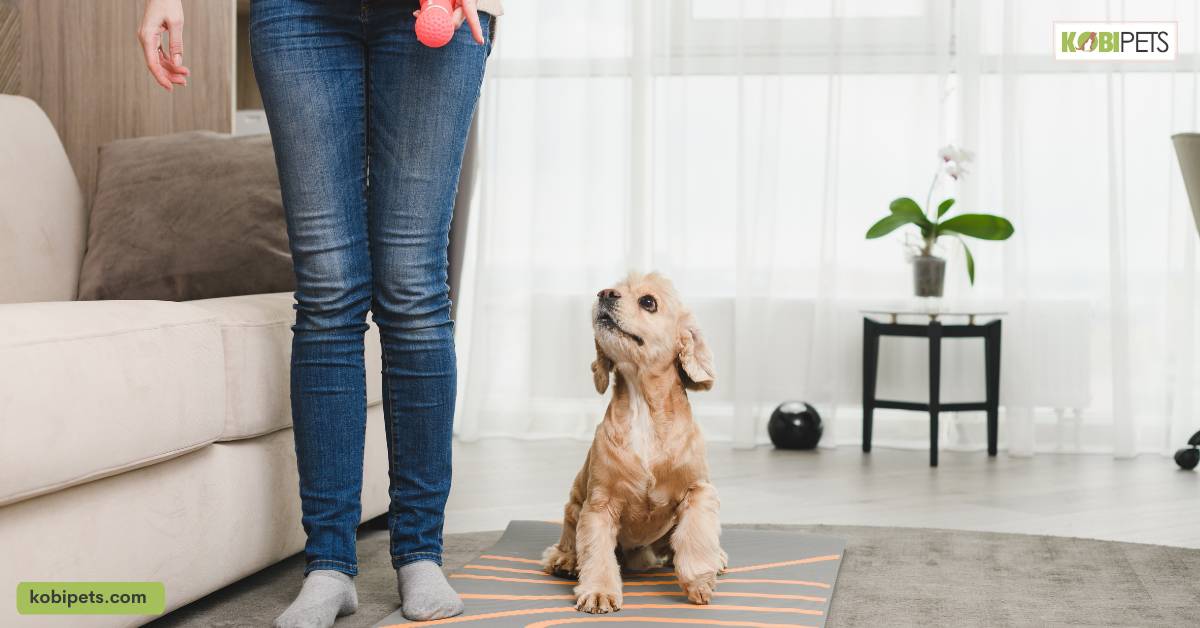
Prevention Strategies for Future Separation Anxiety
Preventing future episodes of separation anxiety in pets is possible with a few simple steps. It is important to start from an early age and continue providing the animal with positive reinforcement when left alone.
For puppies, it is helpful to give them plenty of time for play and socialization, as well as create a safe environment where they feel secure and less afraid of being left alone. It is also important to provide appropriate stimulation for the pet before being left alone so that they don’t become bored or anxious.
Owners should develop a routine when leaving the pet home, such as packing their bags and saying goodbye in a calm manner rather than a rushed fashion. Desensitizing the pet to being alone is another effective prevention strategy that can be done by leaving them alone for short and increasing periods. This will help the pet become more accustomed to being separated from its owner.
Prevention strategies for future separation anxiety in pets can help build a strong bond between owner and pet to create an environment where the animal feels secure and loved. By following these tips, owners will be better equipped to prevent or minimize episodes of separation anxiety in their pets.
It is also important to stay consistent when leaving the pet at home and to never punish them for exhibiting signs of anxiety. Doing so will reinforce negative behaviors and only make the problem worse in the future. Taking these steps can greatly reduce instances of separation anxiety in pets, making it a healthier and happier experience for both pet owner and animal alike.
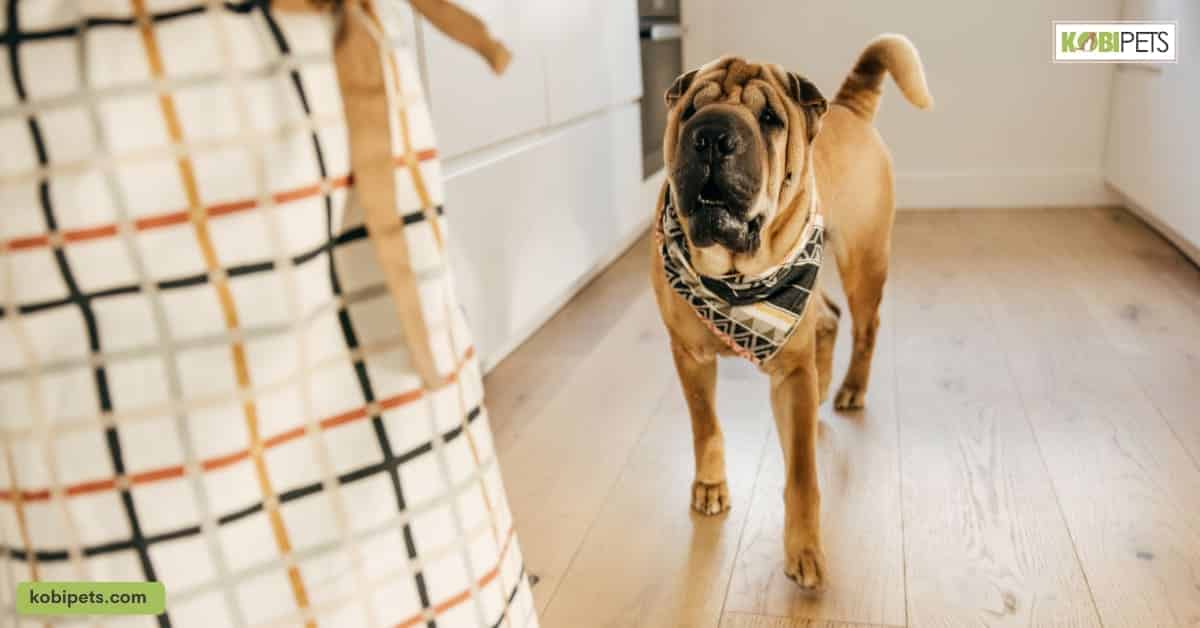
Conclusion
Separation anxiety can be a difficult problem for both pet owners and their furry friends. It is heartbreaking to see your beloved pet distressed when you have to leave them alone, but thankfully there are ways that you can help your pet cope with this issue.
By understanding the signs of separation anxiety in pets, providing a comfortable environment, and taking appropriate preventative measures, you can help your pet cope with separation anxiety and make sure they are safe and happy when left alone.






